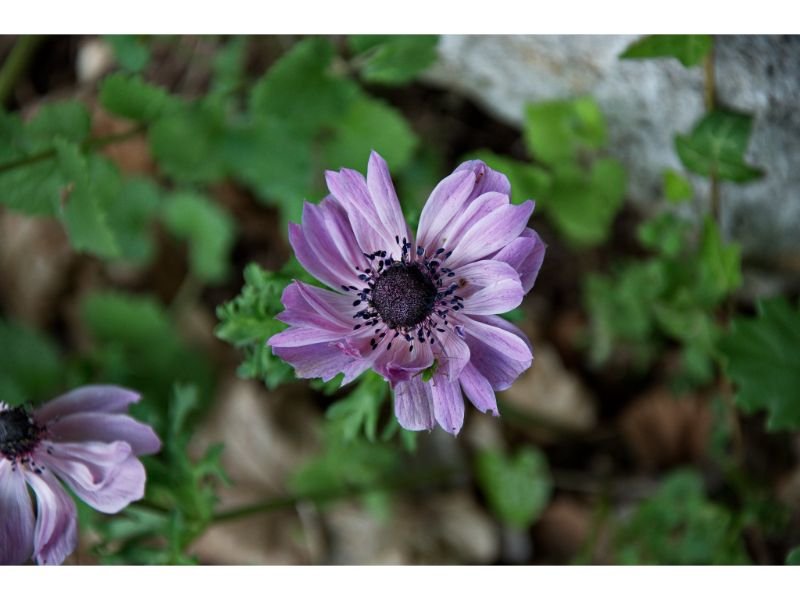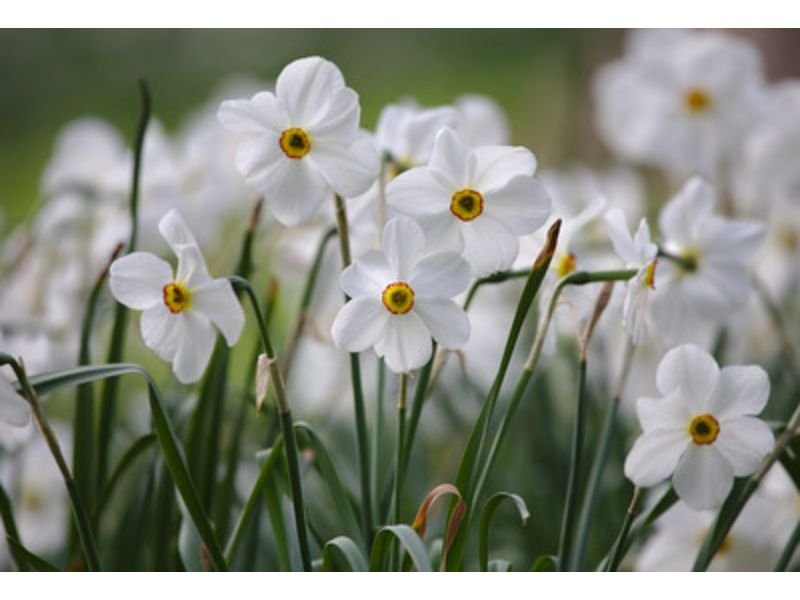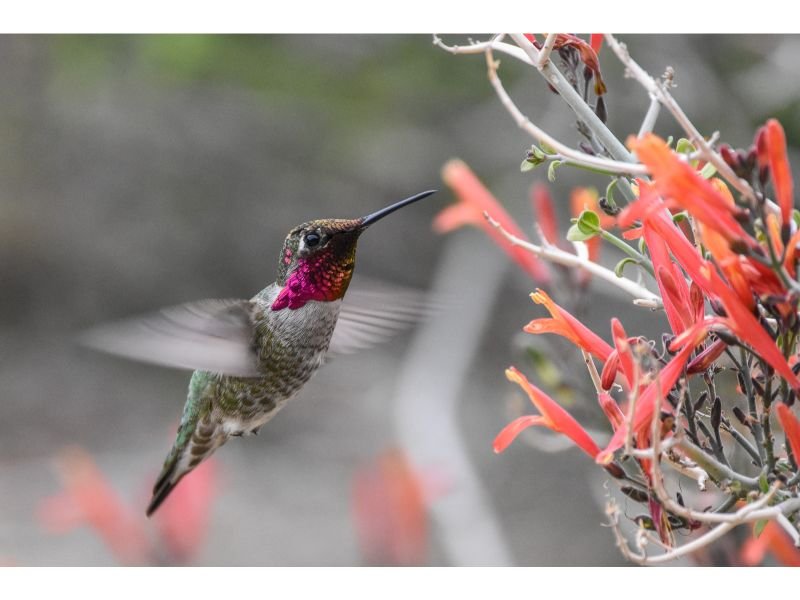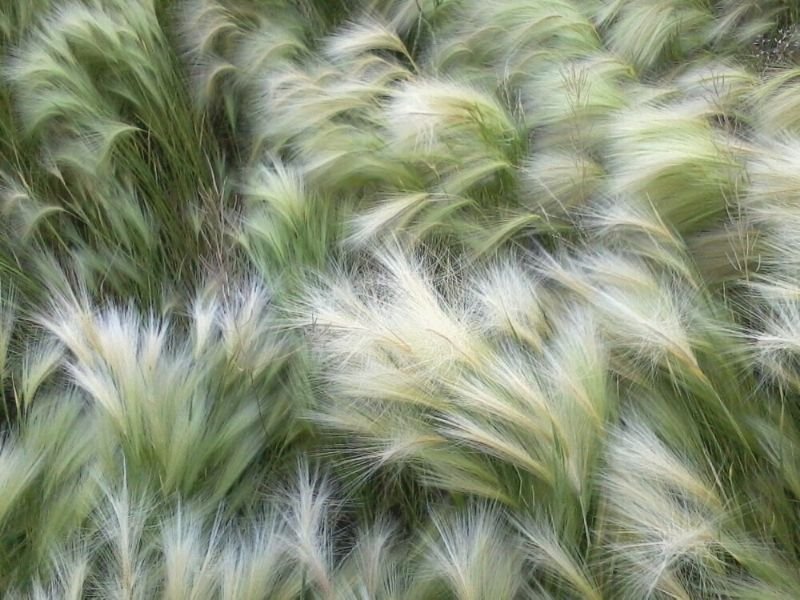Anemone sylphide is a charming member of the de Caen variety that is suitable for seasoned gardeners or novice gardeners alike. Typically a tough plant, anemone sylphide still requires a bit of care and attention to flourish. In this comprehensive guide, we’ll cover it all, from selecting the right soil to ensuring proper watering. Let’s get started!

Table of Contents
Anemone Sylphide Floral Features
Common Name(s): Anemone de caen sylphide, sylphide anemone, sylphide windflower
Scientific Name: Anemone coronaria ‘Sylphide’
Family: Ranunculaceae
Plant Type: Perennial
Country of Origin: Mediterranean region, cultivated in Holland
Natural Habitat: Rocky soils, meadows, woodlands
Size: About 16 to 24 inches (40 to 60 centimeters) tall and wide
Toxicity Level: Low, only if large quantities are eaten
Color(s): Purplish-pink, violet-pink
What Makes Anemone Coronaria Sylphide Fascinating?

Anemone sylphide is truly a captivating flower that never fails to impress. What makes this flowering perennial so fascinating, aside from their delicate beauty, is the symbolism and history that surrounds them. In ancient Greek, anemone coronaria sylphide is often associated with the goddess Aphrodite and has long been a part of traditional medicine! However, it’s safe not to eat any part of this plant without clarifying with a medical professional first.
Foliage and Blooms Appearance
It’s not difficult to set anemone sylphide apart from other anemone varieties. The foliage is medium to dark green, deeply lobed, with basal leaf arrangement. The stem is slender in dark brownish-green, supporting one flower each. The blooms of anemone de caen sylphide are cup-shaped with semi-double petals. The color of the blooms is either purplish-pink or violet-pink, with a deep dark bluish-purple center that appears almost black.
Size and Growth
Anemone sylphide is definitely a compact-sized flowering plant with a moderate growth rate, which can be slower or faster depending on various growth factors such as light, soil amendment, and temperatures. Typically it can take months or even about 1 to 2 years for the plant to reach its mature size.
How Lethal Is Anemone De Caen Sylphide?
While anemone coronaria sylphide is not exactly known as toxic for humans and pets, it’s important to note that this flower is part of the Ranunculaceae Family, which is famous for its toxin called protoanemonin. If ingested, especially in huge amounts, it can cause symptoms such as vomiting, gastrointestinal upset, and diarrhea. However, there’s no need to worry about the plant’s toxicity as long as you take precautions.
How Fragrant Is Anemone Sylphide?
Anemone coronaria sylphide is not known for its fragrance, but rather for its visual charm. Besides, who needs fragrance when you have such a gorgeous display of color in your garden?
Anemone Sylphide Planting Needs

Light
Anemone sylphide, just like most flowering plants, loves a daily intake of sunbathing to about 3 to 6 hours per day. But don’t worry if you don’t have a gardening spot that receives that much sunlight, as this plant is also tolerant to partial shade, especially in areas with hotter climates. Ensure to not give the plant too much or too little sun, but just the right amount to keep them happy.
Watering
Anemone coronaria sylphide is quite particular when it comes to watering. Over-watering can lead to root rot and fungal manifestation, while under-watering can result in stunted growth and dried foliage and petals. The key is to water the plant regularly, not excessively, to achieve moist but not waterlogged soil.
Temperature and Humidity
Areas with cooler temperatures, ranging anywhere from 55°F to 65°F (13°C to 18°C), is where anemone sylphide will perform the best. Nonetheless, they may struggle if the temperature becomes too cold or too warm. It’s also important to check the humidity regularly and keep it only at a medium level. Too much moisture can lead to fungal infections while lack of moisture can cause the plant to wilt.
Soil
When it comes to soil, anemone de caen sylphide is not too picky, as long as the soil is rich in organic matter and is well-draining. You don’t want the soil to be too compacted, too heavy, or too sandy, but rather somewhere in the middle. If the soil is too compacted, you can add some perlite or sand to loosen it, while if it is too sandy, adding coco peat or peat moss can help improve the nutrient and water-holding capacity.
Fertilizing
Although anemone sylphide doesn’t require a lot of fertilizer, moreover if their soil is already rich in organic matter, adding a little fertilizer can give them the boost they need to bloom beautifully. Pick a balanced, water-soluble, and slow-release fertilizer, and apply thoroughly in early spring before the plant starts actively growing. Never over-fertilize as this can lead to excessive leaf growth or worse, burn leaves.
Pruning and Repotting
You can prune anemone coronaria sylphide to remove any spent blooms and dead or diseased foliage to encourage new growth and prolong the blooming season. This plant, however, is quite sensitive to root disturbance and prefers to not be moved around too often. But if repotting is really necessary, make sure to do the process in the fall, when the plant is not actively growing. Pick a well-draining, humus-rich soil mix for the new pot that is slightly larger than the current one.
Anemone Sylphide Bulbs: Is It Can Be Used For Propagation?
If you’re looking to propagate anemone coronaria sylphide, you’ll be happy to know that in fact, it can be effectively done with bulbs! Anemone sylphide produces small bulbs in bulb-shaped structures that are dark brown or tan. The bulbs can be dug up after the growing season to be replanted in a new soil bed or safely stored for the next planting season.
Anemone Coronaria Sylphide Common Plant Ailments
Even the most robust plant can fall victim to pests and diseases, and unfortunately, anemone sylphide is not an exception. Fungal diseases are the most common ailments that are affecting the plant, which can be caused by overwatering, poor drainage, and too much humidity. Other pests that may attack anemone sylphide include aphids, spider mites, snails, and slugs, which like to feed on the leaves, stems, or even the sap. To keep these problems at bay, it’s highly crucial to keep the plant well-maintained and healthy.
Is It Feasible To Plant Anemone Sylphide With Anemone Mr. Fokker Together?
The only answer to this question is absolutely yes. These de Caen varieties of anemone are hardy and share similar growing requirements, and the contrasting color of these two, which is violet-pink for anemone sylphide and dark blue for anemone mr Fokker, will complement each other breathtakingly!
The Merit Of Growing Anemone Sylphide
Growing anemone sylphide is definitely a smart move for any gardener who wishes to add charm and elegance to their space. With their delicate beauty, cultural background, and ease of cultivation, you might just find yourself falling in love with this stunning perennial!

New author in the hood. Loves gardening and flowers are my spirit animals (yes I know they are not animals but I insist). I will be covering most of the flowers’ topics here and occasionally random though as well.






